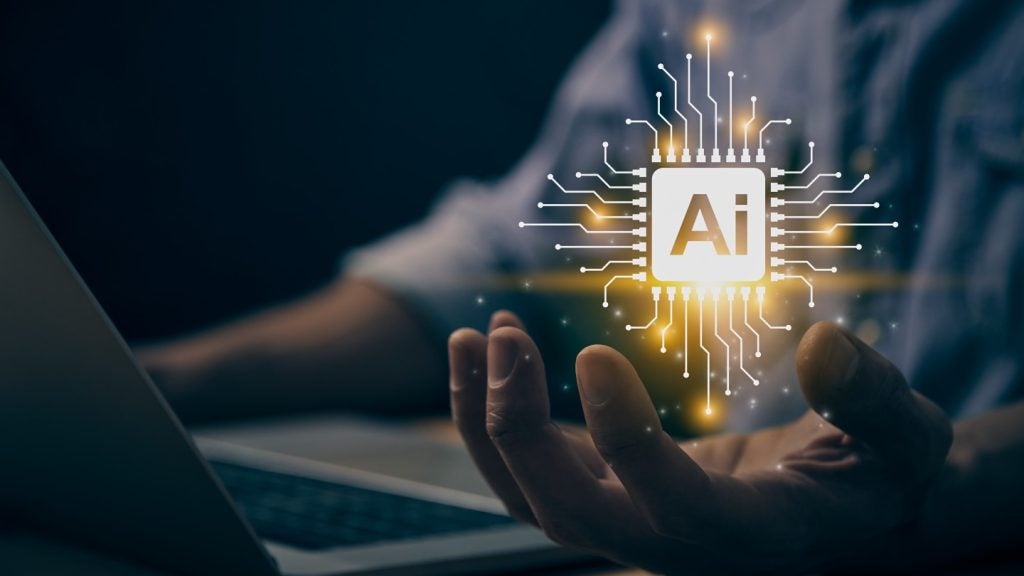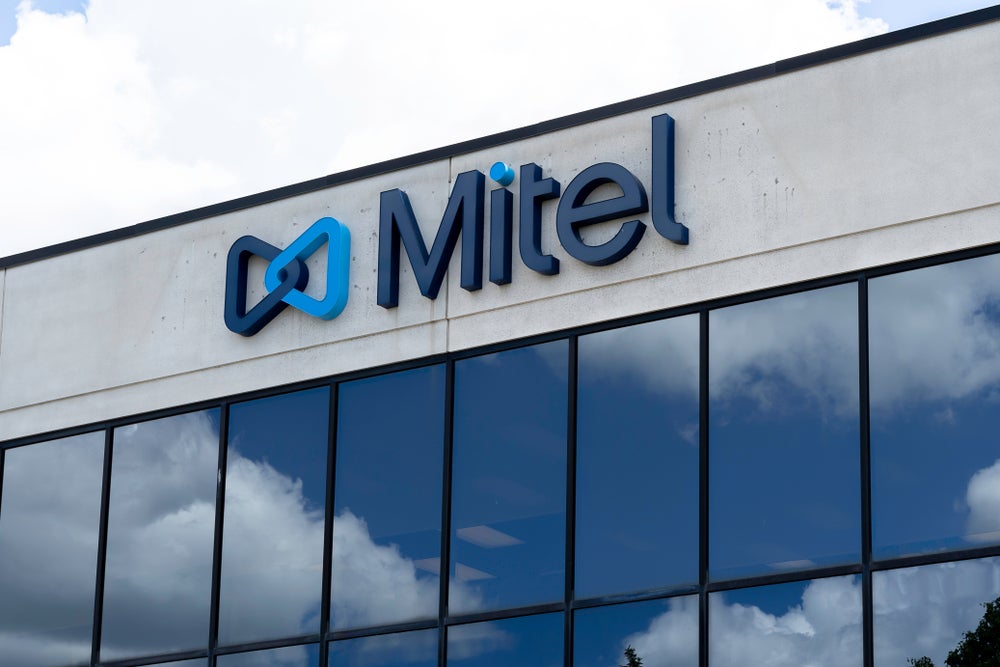
In 2019 digital technologies continued to transform enterprises. Businesses have embraced artificial intelligence, explored blockchain and grappled growing privacy concerns. But what predictions do experts have for enterprise technology in 2020?
We heard from experts from a range of sectors about their enterprise tech predictions for 2020, from edge computing to sustainable data centres.
2020 enterprise technology predictions
Computing will go from the edge to edgeless
In 2020, organisations will begin to fully exploit the potential of edge computing. They will use processing on devices to provide faster services for end users; to avoid the risk of network failure or of having to create and share duplicates of sensitive data; and make their services more cost-effective when operational costs such as energy use are, at least in part, shared with the end device.
At present, there is still a clearly defined edge and centre – with smart devices processing data but ultimately feeding information back to databases on central servers. In 2020, we will see the concept of the “edge” become less meaningful. There will be more and more use cases where the edge essentially works with itself; devices communicating with one another to run applications without the “cloud” and leaving central servers out of the equation entirely, or at most involving them to act as a data archive. The result will be “edgeless” computing, where the notion of an edge or centre loses relevance. As the processing power of devices will keep being eclipsed by the next generation, we will see the rapid growth of edgeless computing where processing can truly happen anywhere.
Andrew C. Oliver, product director, Couchbase
Closer to cracking the code on effective diversity and inclusion
Many companies have come a long way in identifying and addressing unconscious bias toward specific employee demographics, such as women, racial and ethnic populations, the LGBTQ community and others. And while helping people become more aware of their own unconscious bias is important for creating greater inclusion, it’s not enough to bring about lasting transformation.
How well do you really know your competitors?
Access the most comprehensive Company Profiles on the market, powered by GlobalData. Save hours of research. Gain competitive edge.

Thank you!
Your download email will arrive shortly
Not ready to buy yet? Download a free sample
We are confident about the unique quality of our Company Profiles. However, we want you to make the most beneficial decision for your business, so we offer a free sample that you can download by submitting the below form
By GlobalDataThat’s why more and more organisations are addressing structural inclusion, an approach that looks for ways conscious and unconscious biases have been embedded into the talent systems themselves, contributing to inequities in pay, promotions, representation, visibility, access and opportunity.
To surface these inequities, companies are doing de-biasing audits of their processes, building inclusive leadership capabilities in their executive and senior management ranks, and creating greater accountabilities for people managers in achieving greater diversity and inclusion.
Byrne Mulrooney, chief executive officer, Korn Ferry RPO, Professional Search and Korn Ferry Digital
IoT to become ‘integration of things’
The Internet of Things is growing astronomically and, as the number of devices increases, the amount of data increases exponentially. Integration helps channel, refine and transform the data to leverage it for applications, automation, monitoring, and analytics.
That’s why we call IoT the “Integration of Things.” In 2020, IoT vendors must have integration in their toolkit to be viable.
Anne Marie Bond, senior manager & product marketing, Software AG
Multi-cloud will become real
Many organisations have already invested in hybrid cloud; driving effective programmes that leverage public cloud environments with on-premise solutions and Service Provider clouds. However, very few businesses have adopted more than one public cloud solution.
Organisations that have successfully operated a hybrid cloud solution in 2019 will start to embrace multi-cloud in 2020 for a variety of reasons. Some organisations must spread their risk across multiple vendors, some choose different functionality within different clouds and some simply prefer the freedom to choose the most relevant platform for a particular workload or function. Whatever the reason, the lessons learned from hybrid cloud operations will enable organisations to shift to a multi-cloud solution, which could cause a headache for primary vendors as previously they could rely on a certain degree of ‘lock-in’ from their customers once the initial choice had been made.
In 2020, organisations will start to seek solutions that are easily ported from one cloud provider to another, which will be made easier with stateless technologies and strong API ecosystems that allow systems to operate and connect with minimal reliance on the underlying infrastructure.
Simon Ratcliffe, principal consultant, Ensono
Battling for limited talent
Companies will need to have a strong programme in place for attracting and refreshing true engineering talent, including gen-z. Being able to retain acquired talent will be where organisations gain or lose competitive edge, and the impact of this will start to be seen in 2020.
The next big question to ask yourself is “why is your talent attraction program better than your closest competitors?”
Martin Henley, senior vice president of technology services, Globality
Rapid partner onboarding
Accelerating the speed of onboarding has been the life-long mantra of electronic data interchange (EDI) managers, and this will continue in 2020.
Substantially improving the user experience will speed up new profile setups, associated documentation requirements and communication preferences for trading partners. The goal is to complete onboarding not in a matter of days or weeks – but in minutes.
Charlie Greenberg, senior manager, Software AG
Enterprises will combine Raspberry Pi and software-defined perimeters to create secure low-cost IoT networks
All over the world, people are using Raspberry Pis (RasPi) to learn about and build Internet of Things (IoT) devices. Raspberry Pi is a great platform for IoT – it’s a very cheap computer that runs Linux and provides a set of open general-purpose input/output pins that allow you to control electronic components.
Software-defined perimeter (SDP) software improves the security of data flows between devices by removing an IoT device’s network presence, eliminating any potential attack surfaces created by using a traditional virtual private network. In 2020, enterprises will take advantage of the ubiquity of RasPi and the security of SDP software to enhance product differentiation with high-value IoT networks.
Don Boxley, CEO and co-founder, DH2i
The year of the cash-rich fibre challengers
With the UK government pledging £200m to boost connectivity in hard to reach places, the start of 2020 will see unprecedented investment in full fibre broadband providers from private investors as the clamber to tap into the honeypot and compete with the industry leader, Openreach, hots up. Investors will plough money into these fibre providers as they set ambitious targets to connect millions of homes in the UK in a short space of time.
However, towards the end of the year this optimism will start to wain as investors get nervous about missed targets. So while 2020 will be a great start for the full fibre gang, they could be on shaky ground by the end.
Richard Tang, founder and chairman, Zen Internet
Stakeholders demand new metrics
2020 will be the year businesses are pushed to abandon financial growth as the only measure of their success, an idea explored in the Fjord Trends 2020 report.
Organisations are coming under increasing pressure from investors, customers and employees alike to respond to changing societal values about everything – from climate and environment to the dominance of big tech, and the mechanics of capitalism and our political systems. This is a positive call to redefine growth in new ways that enhance our lives. Stakeholders will increasingly demand environmental, social and corporate governance to inform growth strategies.
This change in priorities will lead to new developments in how companies report their performance, meaning the development of new metrics and economic models. As well as calculating profit, businesses will increasingly track things like the personal growth of employees, good health, waste reduction and use of natural resources as success indicators.
Mark Curtis, chief client officer, Fjord, design and innovation, Accenture Interactive
Companies will rely more on metadata than data to provide insights
Overzealous data analyses have brought many companies face to face with privacy lawsuits from consumers and governments alike, which in turn has led to even stricter data governance laws. Understandably concerned about making similar mistakes, businesses will begin turning to metadata for insights in 2020, rather than analyzing actual data.
By harvesting data’s attributes — including its movement, volume, naming conventions and other properties — companies will give indications of concerns around accessing PII and other sensitive information. Metadata lends itself well to data privacy, and with the correct machine learning and artificial intelligence modelling, can still provide critical information to the C-suite such as lead generation changes, third-party data access, potential breaches and more.
Steve Wood, chief product officer, Boomi, a Dell Technologies business
The business-critical need to meet customers’ increasing digital experience expectations in 2020
Any outage, inconvenience or poor digital customer experience will cost UK businesses dearly in 2020. As we enter a new decade, we also enter the ‘Era of the Digital Reflex’ – our use of digital services and applications has evolved to become an unconscious extension of human behaviour, and in turn, consumer expectations about the performance of applications and digital services has sky-rocketed.
74% of UK consumers are less tolerant of problems with digital services than they were two years ago, and over half switch suppliers when performance issues do occur (according to the recent App Attention Index Report). This highlights just how unforgiving customers have become.
With 5G network transformations in full-swing, next year will see consumer expectations escalate further. Consumers will expect faster download speeds, better video quality and immersive experiences in any location and on any device. Poor performance is no longer acceptable. As businesses develop even more intuitive digital experiences to meet these demands, they must also be ready to deal with the increased back-end application complexity. Application performance monitoring, machine learning and AI are critical solutions in solving this level of complexity, and enable businesses to have visibility into the performance issue, insight into the route cause of the anomaly, and the ability to take immediate action and address performance issues before they impact the customer.
The ‘Era of the Digital Reflex’ will bring great opportunities to brands that invest and innovate in their digital customer experience. For those that fail to do this, 2020 will be a tough year.
James Harvey, EMEA CTO, Cisco AppDynamics
Banks to use mobile channels and customer data to differentiate themselves in 2020
Digitally native neo-banks will continue to differentiate themselves in the market in 2020 by the experience they offer to customers. As a result, these banks will begin to pick up the critical minimum number of customers to become profitable, taking away share of wallet from the incumbents. This is set to unsettle traditional, incumbent banks, forcing the realisation that it’s no longer viable to just put a thin customer experience marketing veneer over traditional cost-saving and revenue generation projects. Programmes which have customer experience as their sole goal will become more prevalent, and existing project funding will go to projects that offer real differentiation on that front. An example of this would be turning already-collated mountains of data into useful information for the customer, adding value by proactively communicating financial advice instead of waiting to be asked.
In terms of customer experience trends for banks in 2020, mobile channels are likely to become more important and widely used. Banks will be looking to improve understanding of how to accept and route responses on social media to satisfy customer needs, as these channels focus on two-way communication. Similarly, smartphone push notifications will also become more prevalent, as banks begin to use the rich functionality available to offer customers actions directly from the SMS, email or instant message, instead of simply sharing a notification that points consumers towards yet another channel.
Andrew Stevens, global banking and financial services specialist, Quadient
The continued rise of digital ecosystems
In 2020, we will see the continued rise of digital ecosystems, enabling companies to seamlessly incorporate new products and services into coherent customer experiences. This will see a further shift from today’s economic model, where businesses look to ‘own’ customer engagements entirely. In the new model, ushering in a new Coherence Economy, each of these providers will coordinate their services across the same ecosystem, without ever ‘owning’ the customer.
Organisations will look to extend their own capabilities and their own customer data to other businesses via APIs. For example, Mastercard has turned many of its core services into a platform of APIs, allowing it to create the Mastercard Travel Recommender, which allows travel agents and transportation providers to access customer spending patterns and to offer customers targeted recommendations for restaurants, attractions and activities. We expect to see more organizations take this approach in 2020.
Uri Sarid, CTO, MuleSoft
Edge computing will emerge as the key to device management
Next year, devices are set to become smarter than ever before. The use of them is will also increase to new levels. Already, through the collection and analysis of data, these devices – whether they be voice assistants or smart thermostats – are able to learn about our preferences and adjust accordingly.
But, the volume of data they collect is expected to exceed record levels in 2020. The more devices we use, the harder it becomes to collect all data into a central repository, analyse it and then push the resulting recommendations back to the device. Next year, businesses will need to adopt technologies that execute the compute function on these devices, or on the ‘edge’ of these devices, rather than doing it centrally. This will enable devices to learn and adjust in real-time.
Alberto Pan, chief technical officer, Denodo
UK businesses move to sustainable datacentres
Never has the call for climate change action been louder. As millions walked-out to protest rising carbon emissions, governments held international crisis talks and forests around the world burned, businesses began to feel the effects of shifting customer priorities along with an at-risk supply chain.
One feasible way that businesses will start to move towards sustainability in 2020 is to employ datacentres – the main power source for most – that run, at least in part, on renewable energy. The existing power grid, which currently supports the industry, guzzles a lot of diesel fuel and has led to datacentres contributing 0.3% to global carbon emissions, with the IT industry responsible for a whopping 2%. While 0.3% may sound like peanuts, this equates to over 200 terawatt-hours each year, which is more than the national energy consumption of some countries.
There are plenty of ways that the datacentre industry can clean up its act, improving its credibility and catering to its increasingly climate-wary client base. While not permanent solutions, backup generators can be temporarily utilised as energy stores to reduce the damaging reliance on the national grid. Many hyperscale providers have already built large wind farms and solar installations to power their datacentres. Smaller datacentre users can even purchase renewable credits to cut their carbon emissions without having to invest in new, large-scale sustainable projects.
Jim Kozlowski, Vice President, global capacity planning & data center operations at Ensono
Voice search growth
Voice search will become increasingly prevalent – especially in manufacturing, retail and electronics, where people will buy more through voice over time. As this happens, we will also see more dynamic conversations. These will be increasingly unstructured, where technical language will begin to resemble more human language.
This is especially important in the case of very technical product information where those conversations will lead to higher levels of engagement. AI and machine learning will play a big part in this across the board.
Sarah Assous, CMO, Zoovu
Big Tech to inject more capital into healthcare
Consumer electronics businesses are massively influencing how the life sciences industry engages with technology. Companies like Amazon, Apple and Google are stepping into healthcare and causing a ripple effect throughout the industry. Historically these technology giants have had nothing to do with life sciences but by simply entering into the sector they are injecting change into many aspects of the industry.
Making innovative technology affordable and accessible to the masses, things like wearables and sensors, has enabled transformational changes in life sciences to occur on a timescale that was considered next to impossible only a few years ago. These outside market forces are injecting more capital into a very capital-intensive industry and pushing the industry to take bold steps forward.
Christian Hebenstreit, general manager and senior vice president EMEA, Medidata
A dynamic development process
DevOps is a transitory term and as more intelligent systems become the norm, it will be replaced just like DevOps replaced agile. As technology continues to advance, there will be a continuous bug filter that will enable developers to go straight to production.
The next evolution will focus on customer-centric development, which will be facilitated by creating a feedback loop into development. Developers will need to understand the domain and be able to utilize the feedback in real-time. This will create an entirely dynamic development process that changes to meet the individuals’ needs.
Dr. John Bates, CEO, Eggplant
Data will drive more customer insights than ever
In the last few years, we have seen a significant rise in digitalisation and the amount of data that is collected on customers and their preferences, transactions, and market and industry data.
In 2020, we will see the emphasis shift to using this data to drive a much richer understanding of customers, predicting and responding to their needs and transactional patterns. This will generate much greater insight into their lifecycle stage, and help create personalised offers that address their needs. Equally critical will be the use of this good quality data in risk assessments, compliance and fraud monitoring, to deliver safe banking services to customers.
For commercial customers, banks will bring together the vast amounts of transactional data across multiple product lines – such as lending, trade finance and payments – to create a much richer understanding of transactional patterns, business seasonality and the resultant impact on their financial needs. This means that they too can proactively engage their customer with tailored propositions.
To make this intensive, customer-centric approach to data work, we will see more banks adopting AI and machine learning technologies across their businesses to make sense of all their data. These initiatives are currently constrained by the availability of good quality data, which does not help in building models that are robust and yield correct decisions. In 2020, we will see banks scale their investment in data initiatives that focus on improving the comprehensiveness, availability and the quality of data, so that artificial intelligence and machine learning can be used effectively and reliably.
Jayakumar Venkataraman, Partner, Banking, Financial Services and Insurance, Infosys Consulting
AIoT adoption to enable more sustainable solutions
2019 saw an increase in an infusion of IoT into existing scenarios – with most of the challenges around adding IoT/sensor capabilities and enabling intelligence on the edge being resolved (this fusion of IoT and AI is now known as AIoT).
While the original purpose behind enabling these capabilities may have been to do with early prediction of faults or optimising usage patterns for efficiency, the large volume of data now available from these devices/sensors has opened up new avenues of exploration/optimisation.
We believe that in 2020 this continued focus on IoT adoption, combined with the ability to move decision making to the edge will drive a responsible, sustainable and greener approach to energy consumption.
Rajamani Saravanan, chief architect, Mindtree
Read more: Blockchain and cryptocurrency predictions for 2020: 22 industry experts have their say







